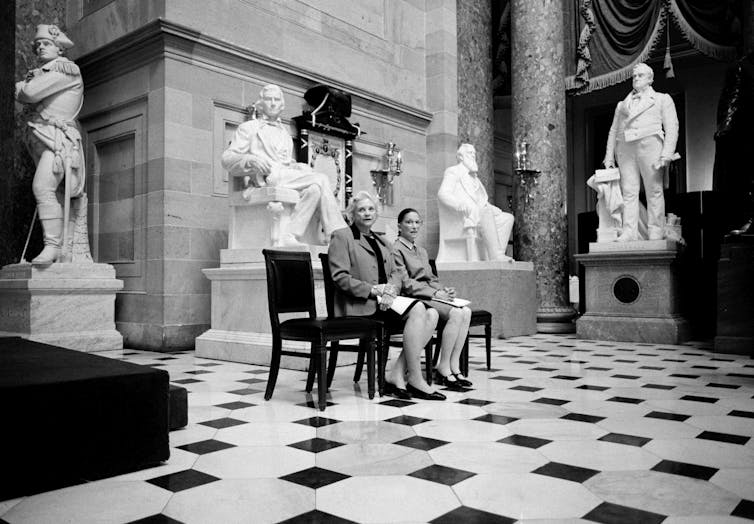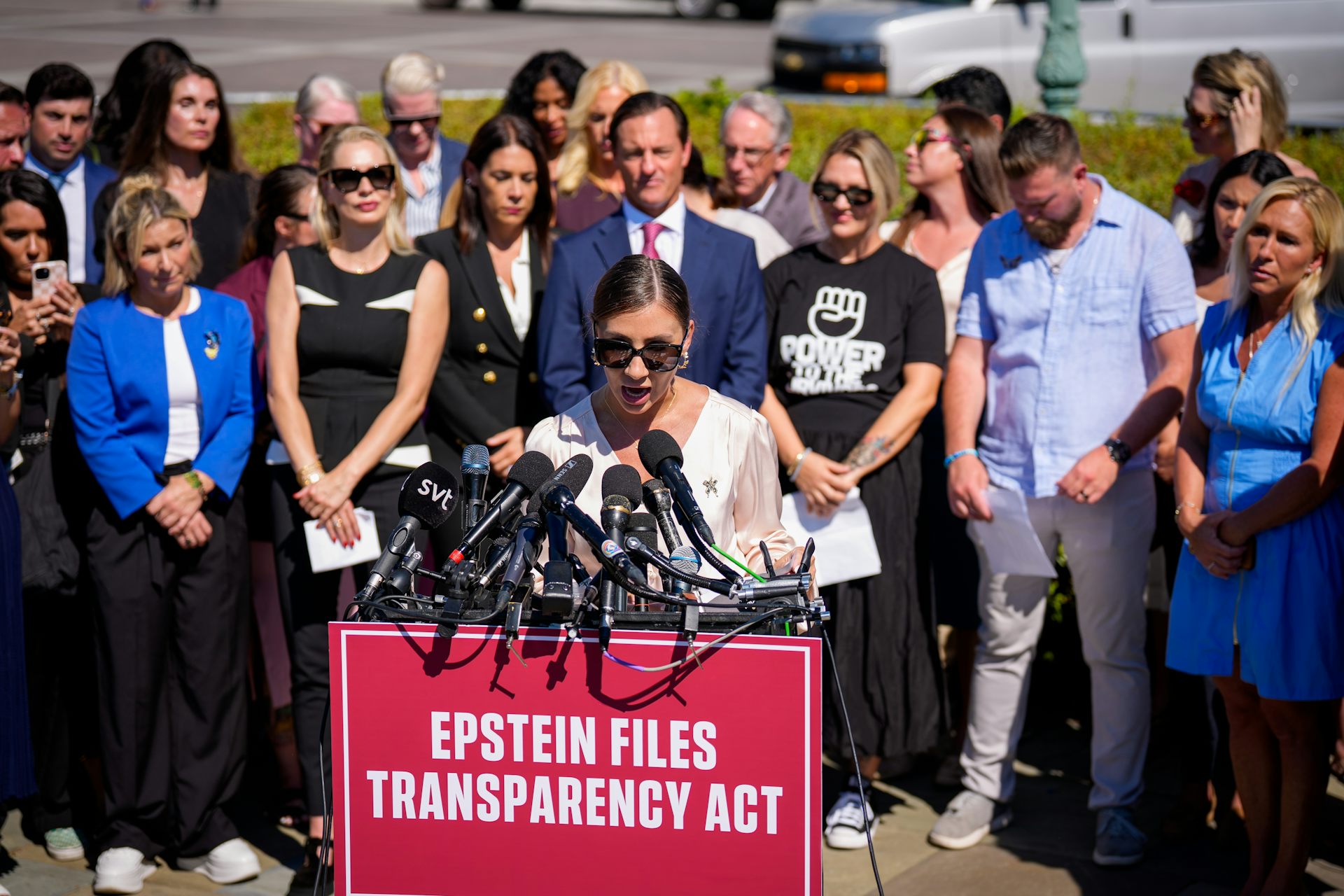Sandra Day O’Connor's experience as a legislator guided her consensus-building work on the Supreme C
The first female justice on the Supreme Court was also the last justice to have served as an elected official. And her contributions to the court reflected her political experience and pragmatism.

When Sandra Day O’Connor stepped down from the U.S. Supreme Court in 2006, she was the last justice to have served as an elected legislator. She previously was a member of the Arizona state Senate and later its majority leader.
O’Connor died at age 93 on Dec. 1, 2023, and since then, the many obituaries and tribute columns for her noted her state legislative experience and the unique perspective it gave her on the court’s work.
That experience included building coalitions and crafting legislative compromises, reaching across partisan divisions to find agreement on contentious policy issues.
O’Connor the state legislator learned the value of incrementalism, of the importance of small steps to produce majority support. O’Connor brought this value to her judging, which fostered consensual decision making.
These were the features of her contributions that I highlighted in my studies of her judicial record, “Justice Sandra Day O’Connor: Strategist on the Supreme Court” and “Queen’s Court: Judicial Power in the Rehnquist Era.” O’Connor’s ability to find the court’s center, expressed in rulings and persuasive legal arguments, was magnified by more than two decades of being at the court’s ideological center, as its pivotal justice and deal-maker between conservative and liberal blocs.
Yet despite this power and innate political sense, her commitment to principles – structural ones such as federalism, which is the division of power between national and state governments, and procedural ones such as stare decisis, in which courts followed precedent in their rulings – was never in doubt. But her commitment was not rigid, and her principles allowed her to make credible bargains with many different justices with whom she served.

Independent, not ideological
As many of her recent tributes have noted, O’Connor banded with the centrist and moderate conservative justices on the Rehnquist Court to preserve the “essential holding” of Roe v. Wade that “protects a woman’s right to terminate her pregnancy in its early stages” in the joint opinion of Planned Parenthood v. Casey in 1992.
She also found common cause with fellow Arizona Republican William Rehnquist – a much stricter judicial conservative than she – toward a doctrine of constitutional federalism more protective of states’ interests. With her liberal judicial colleague Ruth Bader Ginsburg, she voted in support of dismantling systems and practices that perpetuated sex-based discrimination.
Some commentators derided her jurisprudence as overly legislative in character. She did practice a fact-based balancing approach to the formation and application of case law and an incremental, case-by-case approach to developing legal rules.
Her opinions generated a series of doctrinal “tests,” which identified key facts of concern in the case record and proposed standards – or “rules of thumb” – to be used to balance the interests at issue in future applications of the law.
One example: In the abortion context, O’Connor wrote that the threshold against which a state regulation or restriction of pre-viability abortion should be measured was that it could not “unduly burden” the pregnant woman’s choice. Reproductive rights should be overtly and consciously balanced with important state interests in protecting life, both maternal and fetal. Such commonsense judicial doctrine – and the legislative and policy compromises that it acknowledged and engendered – has been what the current court, under Chief Justice John Roberts, has almost gleefully repudiated as “unworkable.”
The 2022 majority opinion in Dobbs v. Jackson Women’s Health Organization that overturned both Roe and Casey never did adequately explain just how “undue burdens” was unworkable. Arguably, what doomed the “undue burdens” standard in the eyes of the court’s modern conservative justices was that it constituted a calibrated compromise and one that was rooted in facts, not ideological rules or interpretive purity.
The current GOP appointees on the Supreme Court have no exclusive claim to the label of doctrinaire behavior, of course. Legislators are also quite capable of doctrinaire thinking and righteous resistance to building difficult consensus – as majorities in the House of Representatives and several statehouses currently demonstrate.
But O’Connor was a different kind of Republican politician with a very different attitude toward accommodating solutions. Where critics might see a standardless, finger-to-the-wind type of judicial decision making, in my analysis, O’Connor identified durable, practical ways of proceeding that offered something for both sides of a political dispute.

Pragmatism and compromise
O’Connor retired from the court almost two decades ago, and the legacy of her approach to the law seems more diminished with each passing term of the Roberts era.
That erosion of her influence didn’t sit well with her.
“What would you feel?” she retorted in response to a question in 2009 about her rulings being reversed by an increasingly right-wing court.
Jurists who practice O’Connor’s method, with its balancing-of-interests, case-by-case and fact-based approach to rule making, cannot guarantee that their accommodations will survive.
O’Connor famously predicted, in her 2003 Grutter v. Bollinger opinion for the court, that a narrowly tailored use of racial preferences – or a limited and circumscribed affirmative action admissions policy – would no longer be necessary in 25 years.
The Supreme Court majority made much of this observation of hers last term in their invalidation of race-conscious admissions programs at Harvard and the University of North Carolina. It was a rejection of her pragmatic understanding of affirmative action admissions policies.
When I think about O’Connor’s contributions and legacy, I too think of one of her famous doctrinal tests – one rooted in context and practicality, not an ideologically defined interpretive philosophy.
In the contested area of religion in the public sphere, O’Connor became identified with something called the “endorsement” test. It looked, quite commonsensibly, at whether a government sponsorship or support of a religious practice, entity or symbol could be understood as conveying a message of endorsement of a religion, which the First Amendment forbids. The test required an assessment of the context and the facts on the ground to determine whether that message was also an impermissible public statement about who belongs to the community and who doesn’t.
Without ever being officially adopted as the court’s doctrinal rule, O’Connor’s endorsement test guided judicial judgments about public display of religious images, state aid for religious institutions and religious conduct by public officials until very recently.
But questions about First Amendment establishment of religion and a separation of church and state were becoming more politicized even before O’Connor left the court. And in 2022, in Kennedy v. Bremerton School District, the majority upheld a high school football coach’s religious freedom to engage in prayer at the close of a public school football game.
In that majority decision, the Roberts court dismissed any concern for endorsement of religion by the government, dismissing also the “ahistorical” and “atextual” test. But in order to get there, the conservative justices in the majority also minimized and even disregarded much of the case’s factual record: about players and other school employees joining the public prayer and disruption from media sensationalizing of the conflict.
Facts that were relevant to understanding the actual message of the prayer exercise and its actual impact on the community were swept aside in Bremerton. I think of this decision as showing the distance, here and now, that the court and its justices have moved from O’Connor’s approach to the law and to being a judge.
Nancy Maveety does not work for, consult, own shares in or receive funding from any company or organization that would benefit from this article, and has disclosed no relevant affiliations beyond their academic appointment.
Read These Next
America faced domestic fascists before and buried that history
Although thousands of Americans embraced fascist ideas during the interwar years, a new study examines…
Supreme Court case about ‘crisis pregnancy centers’ highlights debate over truthful advertising stan
There are some 2,500 of these centers across the United States. Many are located within a mile of an…
Shaping the conversation means offering context to extreme ideas, not just a platform
Should all points of view be heard from? Defending certain values and ideas makes it a bit more complicated…






